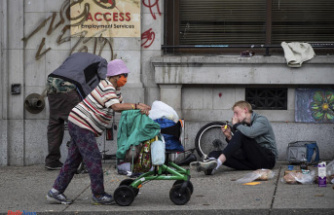Since we painted bison in the caves, humans try to find out what is our connection to the animal kingdom. How would it be for the forest as a deer, fly like a hummingbird or be hunted by predators with more intelligence than us? These questions are still there, even though zoo and ethologists take centuries by investigating the secrets of animal behavior.
The answers are in science, as always, but art and culture are also valuable resources to transcend the rational and reach the emotional. The shortest way has always been to provide animals from human qualities, Mickey Mouse to the documentaries of Planet Earth, but now that we finally consider them sentient beings by law and macrogranjas have entered the electoral campaign, maybe the time has come to truly put us inside your skin in the most rigorous sense.
Cow, documentary led by the English filmmaker Andrea Arnold, which premieres these days in Mubi, trying precisely to involve ourselves until the number of a dairy cow. And she does it from the purest and most raw observation.
Again, as we have already seen in the masterpiece, Kelly Reichardt, the ruminant is a medium and nightmare catalyst. If in one case, it serves to rethink the very essence of the Western and even the cinema, in the other, the one who proposes Arnold, the eyes of Luma, the protagonist beef of this approach to everyday hell of an industrial farm, teaches us an abyss fathomless.
Nobody really knows what happens behind those huge pupils, if what they express is boredom, fear or simple indolence, but as we discover the cruel cycle of his life, sadness is imposed on all his evidence. Or is human empathy that drags us to that moral precipice?
Rolled with camera in hand, with the objective placed at the height of the udders and the eyes of Luma, in COW there is no voice in explanatory off or more human expressions than the orders of persuasion or encouragement of the anonymous workers of the farm.
Thus, the viewer is alone with his thoughts, which can oscillate between "this is the most boring that I have seen in all my life" until "I am going to give up the dairy products and become a radical animalist at once by all." Or perhaps what Luma and Arnold transmit are the closest thing to our repetitive work life, stabulated in our jobs while "milk" again and again until we stop producing. The metaphors that Rumian are like that.
Cow comes a few months after the premiere of Gundund, documentary in which Russian director Viktor Kossakovsky resorted to a black and white precious to accompany the bristle that gives title to the movie in the strange emptiness of his existence, when the young at the That has breastfed are withdrawn by the invisible human hand. The placidity of the planes flush, the aesthetic care of a travelling at the rhythm of a fucking hen, leave the restlessness when we intuate that the slaughter is happening out of plane. Gunda is alone again, and we with her.
The documentary is the most direct means to approach the animal perspective, but fiction is always lurking to surprise us with proposals such as Lamb. The winner of the last Festival of Sitges, premiered in cinemas last November, goes a step further, raising a fablefish in a remote Icelandic farm: the protagonist couple faces the birth of a hybrid lamb-human, who adopts as if it were His daughter lost time ago. Nature is not evil, comes to say the debut of Valdimar Jóhannsson, but he will attack those who exploit him for his own benefit.
The cinema is not alone in this immersion in the animal kingdom. Recent or next publication books demonstrate how much we still have to learn from all kinds of creatures, including our pets. The title of the Corzo man, book that Captain Swing will publish on February 14, is a statement of intentions. It is the best and most brief description of the GEOFFREY experience by Geoffrey, a French photographer who, between 19 and 26 years old, lived in a forest of Normandy emulating the corros.
"The corzo turns to the side, as inviting me to discover the forest next to him. Then, slowly, turn around and enter the thicket with elegance [...]. I have felt the call of the forest. The legs do not answer me and I lack the breath. It has come time to leave the world of human beings to live between roos and, thus, to be able to understand them. " An effort that seems to follow his admired Jane Godall or Diane Fossey, although he ends up looking more like Charles Foster, who in being an animal and tried to reveal what he supposed to feel the world from a badger's point of view, an otter, A fox, a deer and a swing.
There are more: chickens, Jackie Polzin's novel published by Asteroid Books, develops as a moving reflection on loss, loneliness and hope that can arise from both and from the company of four most expressive chickens, while in the Awakening of cats (planet), Bernard Werber poses a fun gatuna revolution to solve the madness of his assumptions. He was never better seen to be an animal.
Date Of Update: 03 February 2022, 23:15











